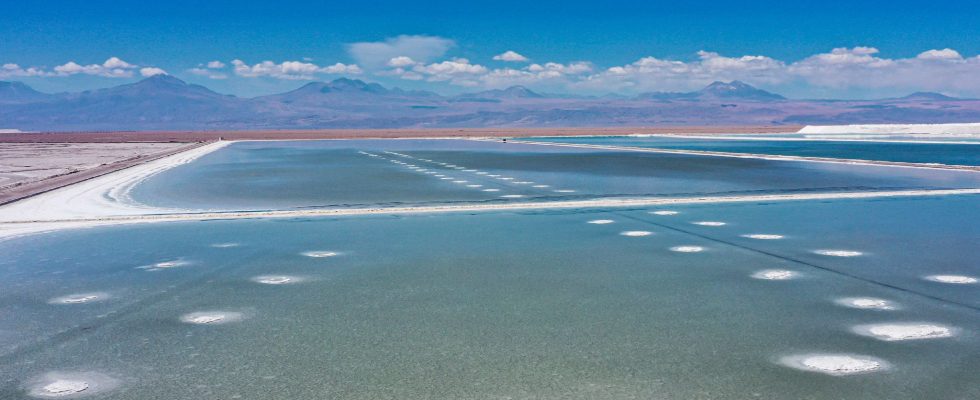The leaders of the countries of the European Union are meeting with their counterparts from Latin America and the Caribbean for two days, this Monday and Tuesday in Brussels, to try to strengthen their ties. Among the issues at the summit: lithium, an essential metal for the EU’s decarbonization strategy, which will ban the sale of new cars with combustion engines from 2035.
The President of the European Commission, Ursula von der Leyen, announced the signing of a memorandum of understanding with Argentina on essential raw materials, in particular lithium, essential for the manufacture of batteries for electric cars. L’Express takes stock of this strategic resource in figures.
Three countries concentrate half of the world’s reserves
Argentina is one of the main world producers of this mineral. The country forms with Bolivia and Chile the “lithium triangle”, with nearly 53% of the world’s reserves, according to the United States Institute of Geological Survey 2023 report (USGS). The United States has 12.2% of the world’s lithium reserves, ahead of Australia (8%) and China (6.9%). Next come Germany (3.3%), Congo (3%), Canada (3%), Mexico (1.7%), the Czech Republic (1.3%), Serbia (1. 2%) and Russia (1%).
In France, a report by the Geological and Mining Research Bureau (BRGM) identified 41 “resources and occurrences” of lithium in 2018, according to West France. One of the largest European lithium mines will see the light of day by 2027 in the Massif Central. The Emili project, announced on October 24 by the French industrial minerals group Imerys, will help Europe to (partly) get rid of its dependence on China.
1.4 billion dollars of Chinese and Russian investments in Bolivia
Bolivia announced at the end of June that China and Russia would invest $1.4 billion to open two lithium mines in the country. The Chinese company Citic Guoan and the Russian Uranium One Group, two groups with strong state participation, are going to join forces with the public company Yacimientos de Litio Bolivianos (YLB) to build two lithium carbonate production plants.
According to the plan revealed by the government, Uranium One Group will put 578 million dollars (532 million euros) on the table for a factory in the salt desert of Pastos Grandes. Citic Guoan will invest 857 million (789 million euros) for a similar project in that of Uyuni. Both sites are in the department of Potosi (southwest).
Bolivia estimates the quantities of lithium available in the Uyuni salt desert at 21 million tonnes and assures that it is the largest deposit in the world. However, the South American country is struggling to exploit its immense reserves for geographical and topographical reasons, but also because of political tensions and a lack of know-how.
54 lithium-ion battery factory projects in Europe
An Asian specialty, the production of automotive electric batteries is developing in Europe, with more than 50 lithium-ion battery factory projects announced on the old continent by 2030 – whereas they are almost non-existent today. According to the European NGO Transport and Environment, the exact number of projects to set up car electric battery factories listed in Europe is 54.
Germany is at the forefront with 15 projects in the pipeline, followed by Hungary (5 projects), France (4) and Norway (4), according to the T&E census. In France, the factory Automative Cells Company (ACC), owned equally by Stellantis, Mercedes-Benz and TotalEnergies, inaugurated at the end of May in Billy-Berclau, in the north of France, will have a production capacity of 40 gigawatt-hours (GWh) in 2030 .
Three other factory projects have been announced in France: those of the Sino-Japanese group Envision AESC which is due to open in Douai in 2024 (20 GWh), and of the French start-up Verkor in Dunkirk by 2030 (50 GWh). Finally, the “solid” battery plant announced on May 12 by the Taiwanese ProLogium in Dunkirk (48 GWh) aims to be commissioned in 2026.
